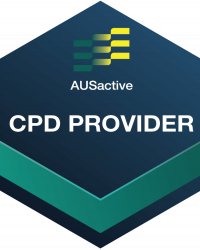Reformer Repertoire
Foot Work:
Calf Raise
Alternate Names
Tendon Stretch
Derived From
Classical Reformer: Foot Work Tendon Stretch
Primary Element
Stability
Why for Primary?
The Footwork series continues to warm up and prepare the body for what is to come by further developing pelvis stability and continuing to use the larger muscle groups of the legs.
Can the legs move independently of the pelvis? Keeping the pelvis still and moving the legs is the aim here, creating and testing the stability of the pelvis.
In addition it relates to reflexology as the sole of the foot positioning links to specific organs of the body (Clain Pilates, 2002).
Secondary Element
Strength
Why for Secondary?
To create and develop strength in both the gastrocnemius muscle and soleus muscle (calf muscles) during the plantar flexion or lifting motion of the exercise.
Tertiary Element
Mobility
Why Tertiary?
The primary mobility focus is to create controlled movement and work through the full range of motion at the talocrural (or ankle) joint.
Repetitions
8-10
Apparatus Setup
Suggested springs
- Number system: 3 springs
- Colour system: 3 x red springs
- Resistance: medium to heavy
Headrest position flat unless any neck issues or the client feels more supported with the head lifted using the headrest or a slightly deflated Pilates ball or cushion.
Foot bar one position is set at one position down from vertical, or on many Reformers the top angled position.
Plane of Motion
Sagittal
Targeted Muscles
To create, develop and connect with the pelvis stabilisation muscles the focus is gluteus medius and gluteus maximus and the deep abdominal muscles transversus abdominis.
During the calf raise movement the calf muscles of the lower leg.
They comprise:
- Gastrocnemius muscle which runs on the posterior leg from the femur or thigh bone to the heel or near the Achilles tendon. It is layered above the soleus and the most superficial calf muscle, and forms for bulk or belly of the calf. When the foot plantar flexes or the knee flexes (or bends) the gastronemius is contracting
- A way to remember? “Gas explodes” as the gastrocnemius is responsible for explosive movements (KenHub, 2022) and provides the force behind walking, running and jumping movements
- Soleus which runs on the posterior lower leg from just below the knee to the heel or near the Achilles tendon. It sits underneath the gastrocnemius muscle. When the foot plantar flexes the soleus is contracting. It also works as an anti-gravity or posture muscle.
- A way to remember? “Stand on your soles” as the soleus is a posture muscle (KenHub, 2022)
Warnings
Not suitable for some hip, knee and ankle pathologies, or if the client is unable to work in a pain free range of motion during the exercise.
Execution
Lie supine on the Reformer in a neutral pelvis position with the ball of each foot on the foot bar in line with the ASIS (hip bones). Arms positioned beside the body with the shoulders squared against the shoulder blocks.
Inhale and dorsiflex the feet, drawing the heels under the bar. Exhale to plantarflex the feet lifting the heels with control.
Observations
Do a body scan of the client taking note of the following points
- Pelvis
- Are the hip bones even horizontally or is the client leaning towards and biasing one side?
- Can the client plantarflex and dorsiflex the ankles without the pelvis moving?
- Legs
- Are the knees dropping inwards? Have the client work with a Magic Circle, Pilates Ring or a booty band above the knees to assist with abduction. Note the feet might sit slightly wider apart
- Feet
- Are the feet moving smoothly between plantar flexion (pointing) and dorsiflexion (flexing) without locking into the joints at the top, or bouncing at the bottom?
- Are the insides of the foot lifting or leaning outward? (supinated)
- Are the insides of the foot rolling inward? (pronated)
Learning Style Technique Cues
Auditory – word associations that connect mind and body
- Aim to use the full range of motion of the ankle, but avoid locking up into the joints when lifting into plantarflexion
- The aim is to keep the pelvis still whilst the legs are moving
- Say the client’s name when you’re about to interact with them
Visual
- Push the Foot Bar away from the body to create the power or explosive movement to lift or plantarflex
- Imagine 50% of the weight is concentrated around the big toe, the other 50% evenly through the remaining toes
- You may demonstrate a part of the movement as a visual representation for the client to see
Kinaesthetic
- Feel the feet actively pressing and lowering down with dorsiflexing the feet, without bouncing and dropping the heels and then using momentum to lift up again. Aim for smooth, controlled movements
- As you plantarflex the feet, feel the abdominals and centre of the torso engage
- Try not to collapse the torso as you dorsiflex the feet
Modifications and Variations
Regress the exercise by
- Reducing the spring setting to two red and one blue springs to connect into the pelvis stability component of the exercise, practice deep core muscle activation, and reduce the leg load
- Reducing repetitions and/or pace
- Regress to Foot Work: Parallel Toes
Progress the exercise by
- Increasing the spring settings to three red and one blue springs
- Placing a slightly deflated Pilates ball or instability prop under the pelvis to further challenge pelvis stability
- Progress towards
Series and Transitions
This exercise is part of the Foot Work, but is usually added on after the bend and press style Foot Work series exercises. For example after Parallel Toes keep the legs straight to transition into Calf Raise, or after Wide V-Position Toes lift the legs together and place the balls of the feet back onto the Foot Bar in parallel for Calf Raise.
Calf Raise can also be found in the Wunda Chair repertoire and the Cadillac repertoire.

